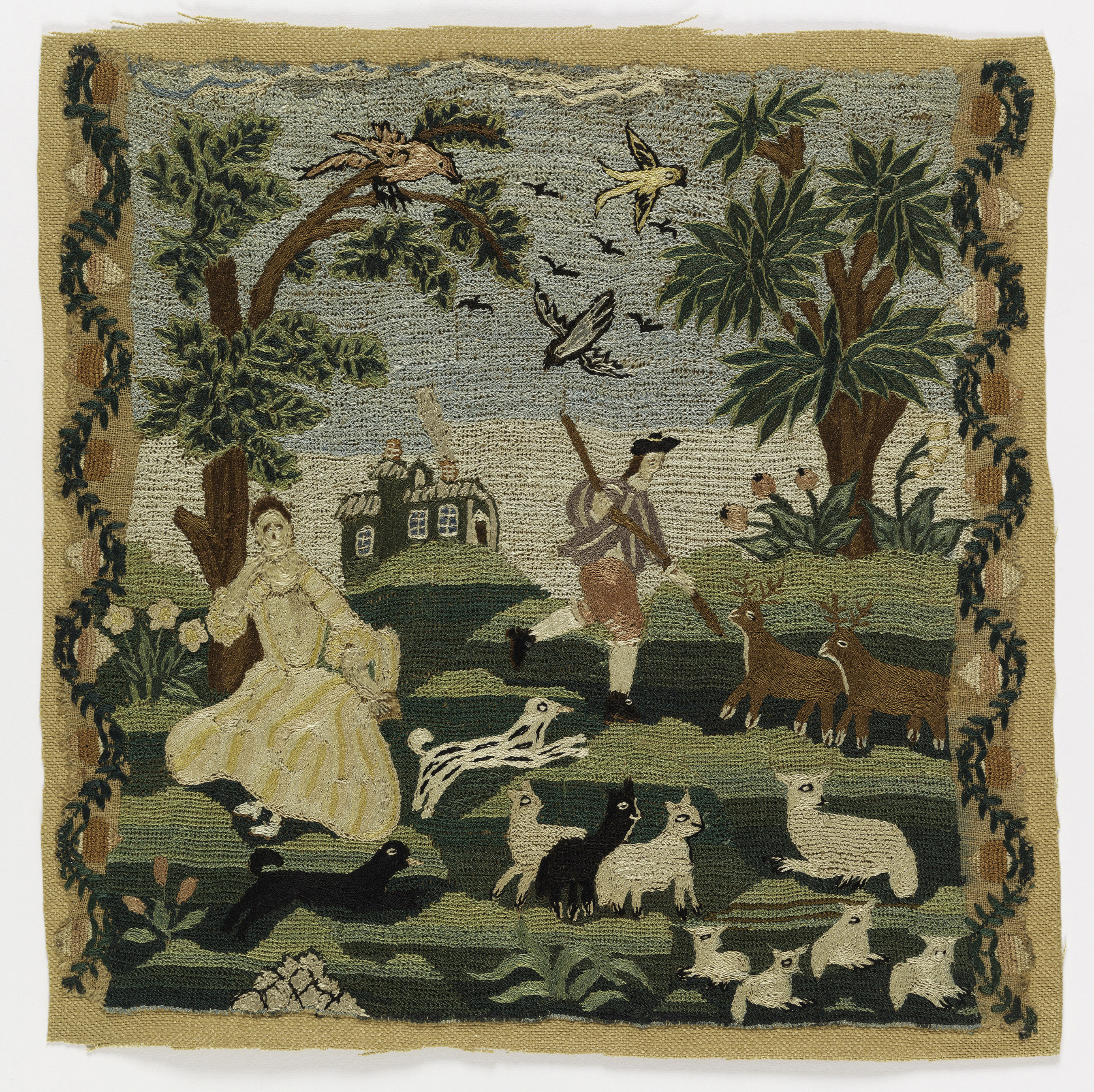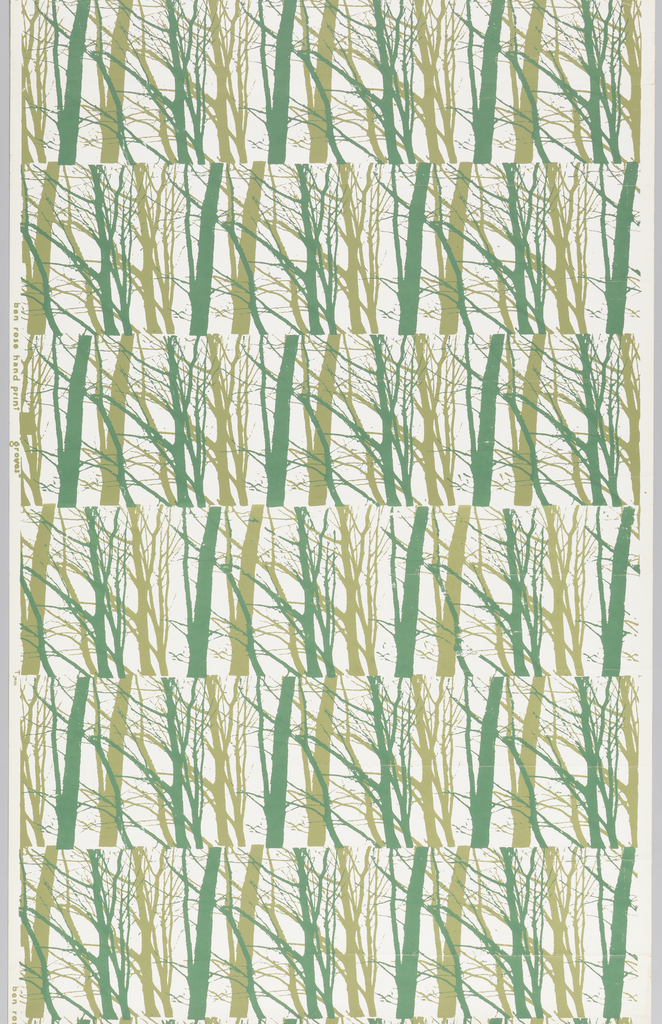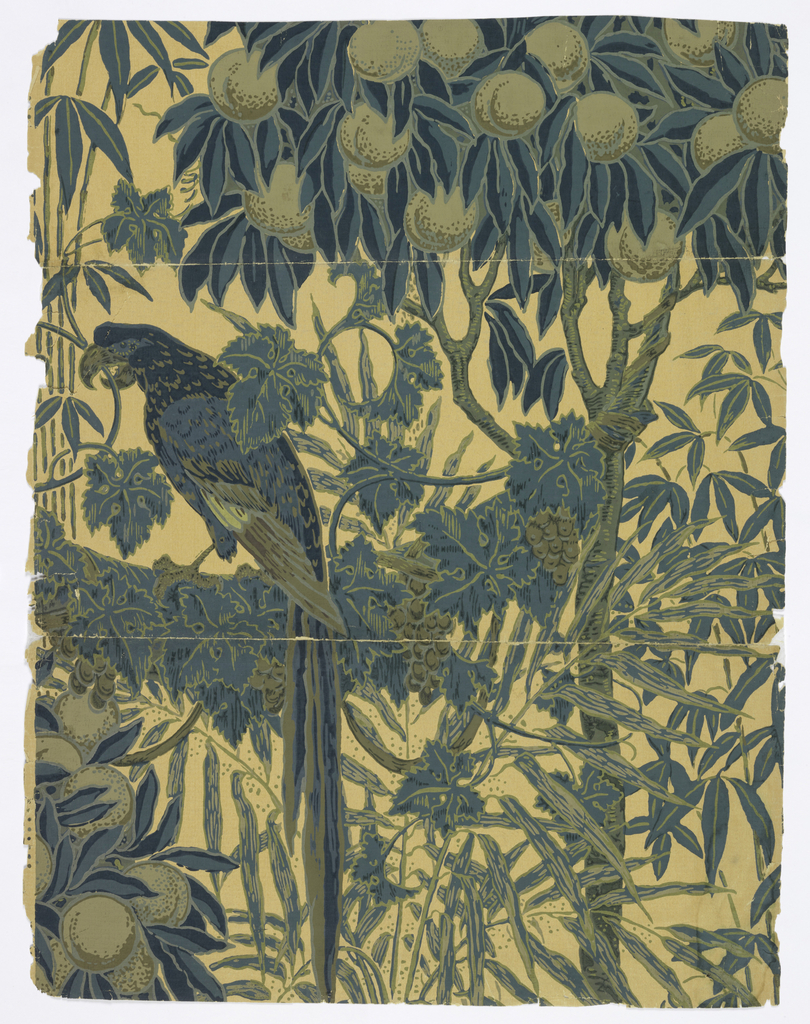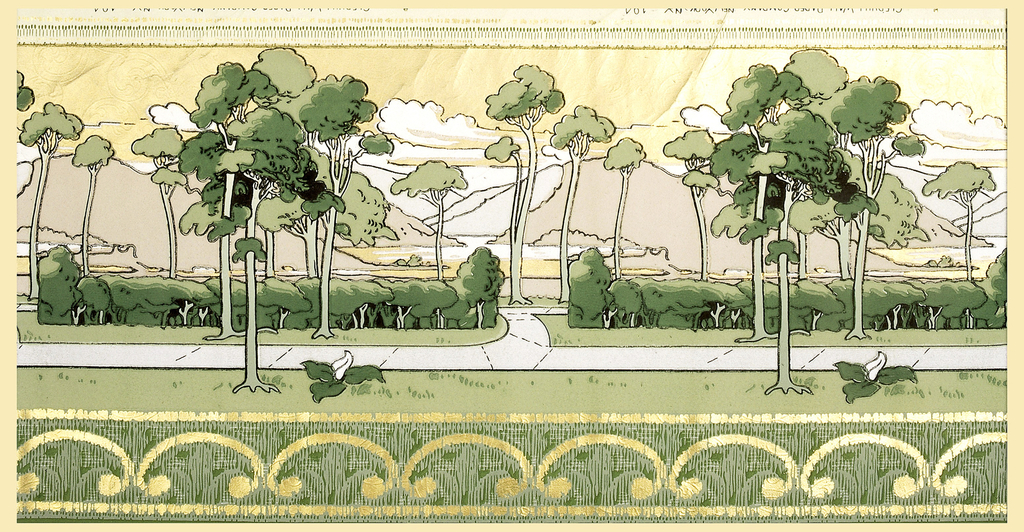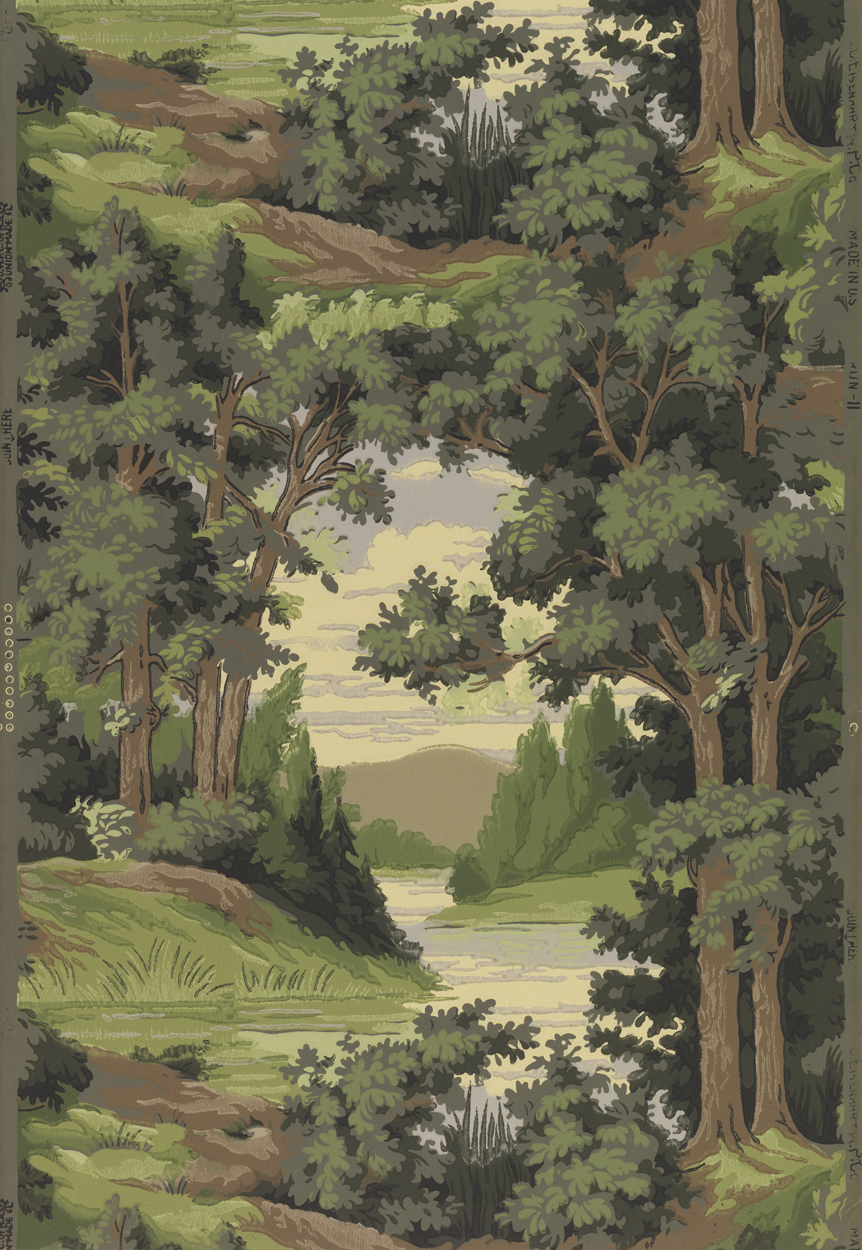This anonymous embroidered picture was probably worked in Boston, where affluent seventeenth- and eighteenth-century New England families frequently sent their daughters to complete their educations. Popular in England during the first quarter of the eighteenth century, such needlework scenes first appeared in Boston in the early 1730s. This example is part of a group of...
This sidewall, manufactured by Ben Rose Inc., was made to cover the majority of the main wall area, between the chair rail and frieze. Groves was screen-printed in 1955, and depicts silhouettes of leafless trees. Screen-printing entails using a large mesh screen, with each separated design layer printed one after the other by hand on...
“Crane’s facile handling of gorgeous birds…has never been excelled,” gushed A.V. Sugden and J.L. Edmondson in their “History of English Wallpaper,” written in 1926. Almost a century later, their compliment still rings true. “Macaw,” designed by Walter Crane for Jeffrey & Company, was originally created as a display piece for the manufacturer’s exhibit at the...
In this frieze, printed by the Gledhill Wallpaper co. in 1906-7, tall, slender trees stand in the foreground, growing from a well-manicured lawn like elongated stalks of broccoli. A paved, white sidewalk runs horizontally across the length of the frieze, branching off in the center of the panel and leading to a majestic landscape of...
The rapid industrialization and urbanization that occurred in the United States during the mid-20th century made many Americans feel nostalgic for a more bucolic way of life. Landscape wallpaper was a cheap and easy way for people to bring a bit of country living to the city. Equally eager for glimpses of nature were the...
